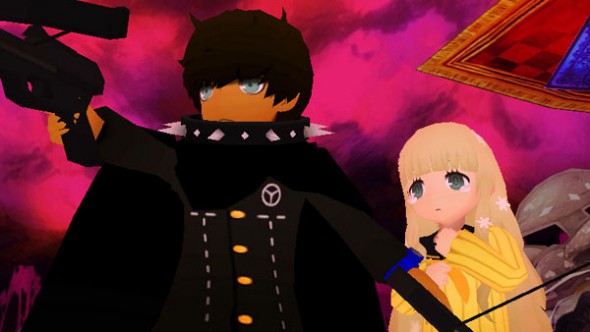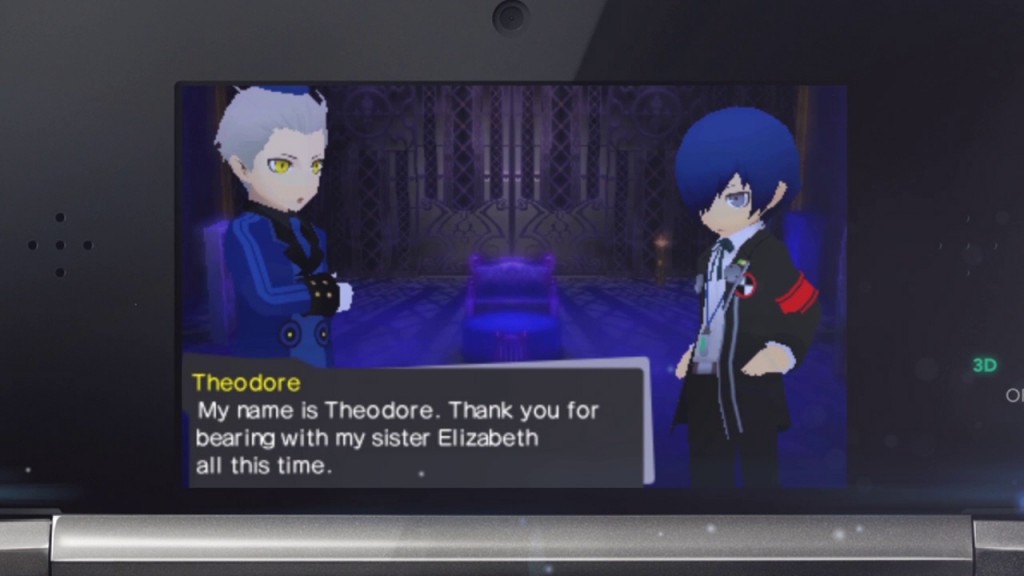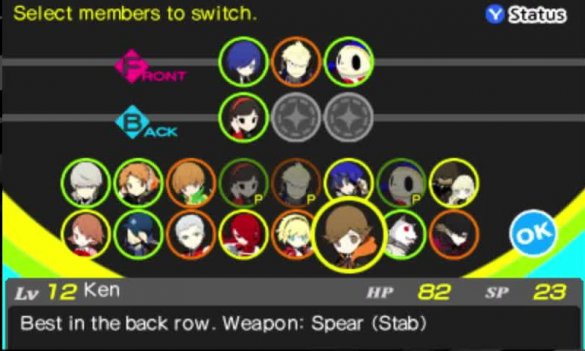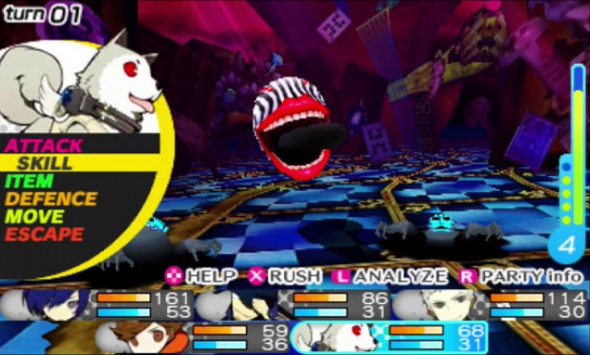
Developer: Atlus
Publisher: Nippon-Ichi Software, Atlus, Nintendo
Platform: Nintendo 3DS
Persona Q: Shadow of the Labyrinth – Review
The Persona series has been around for quite a long time, having started on the original Playstation, up until the latest addition to the franchise: Persona Q for the Nintendo 3DS. In this new installment, you will be set in a world full of mystery and fateful encounters together with both the casts from Persona 3 and Persona 4 in their attempt to return to their original world.
Story
In the world of Persona Q, you will be playing as the cast from both the Persona 3 and Persona 4 games with each their own separate, yet intertwined storylines. The characters from both games have been hearing a strange sound coming from some kind of bell, which is strange because in neither world there is clock tower present. After some conversations with both parties separately, they keep on hearing this bell making noise once in a while, while the characters from Persona 3 meet up with the Velvet’s room Elizabeth and Persona 4’s Margaret. They will tell you that something strange has been happening lately, while both parties have suddenly teleported to a strange looking room that is similar to the Velvet Room, yet totally different. The friends of both protagonists are being made acquainted to the secretaries for the first time, learning about how the protagonists have the Persona ability of the Wild Card, allowing both to switch their Personas.
Both parties notice that they have been transported to Yasogami High School, yet it looks different from the one in Persona 4, as there is now a strange clock tower present. They also meet up with Zen and Rei, where both parties hope that they will lead them to their original world. In order to find their way back, they will need to enter the dungeon called ‘You in Wonderland’ filled with shadows. Eventually both parties meet up and learn about the fact that the world where they are currently in, is actually created by Zen himself, being part of Chronos (a time demon). Zen was to guide a girl called Niko to the afterlife while he became intrigued by her anguish and eventually wanting to save her. He then erased both their memories, giving themselves a new name and as such meet up with the casts from Persona 4 and Persona 3 in their quest to restore both their memories and let both parties escape back to their own time by defeating Chronos.
Graphics
Persona Q adapts a Japanese anime-styled graphic design where every character looks very small and cute. The designs are well done and each character is designed very different from one another, showing off what kind of character they are.
The designs of the enemies are also varied, while some look the same with a different coloring scheme. Bosses also look very nice.
Backgrounds are designed based around a certain theme, making them look very special and giving off that desire to go and explore them while in dungeons. And thus there are no complains in the graphical department.
Sound
Much like the original games of Persona, the music in this new installment is one of the main aspects of what makes the series so great. Each track fits situations very well, and are fantastically pleasant to listen to. If you haven’t played a Persona game before, then this alone could be enough reason to start playing.
The voices in the game are in English, with the same voice-actors as the original games. Not a single character’s voice sounds off, making them all pleasant to listen to.
Gameplay
Persona Q is a first-person dungeon crawler, which makes it a little more like the original Persona games while being different from Persona 3 and Persona 4 that where third-person. When reaching a certain point in the game, the option to enter a dungeon will be available. Before you would venture in a dungeon, there are all kinds of preparations that you should make. You have the option to heal up you party before going into a dungeon, which is pretty much mandatory as you would otherwise get your ass kicked thanks to the constant increase in enemy difficulty.
Aside from that you also get the chance to change up your party formation, divided in a back row and a front row. There can be a total of 5 characters at once in a party, while the other member are on standby and don’t gain any experience after each battle. A max of 3 characters can be on one row, where the front row takes more damage and deals more damage than the ones on the back row. This means that players will need to put their weakest, more fragile members on the back row so they are safer while attacking the enemy with distance attacks.
Next up, when you unlock access to the Velvet Room, you are able to combine and fuse different Personas earned in battle into new, stronger Personas for you to use. You can also access the compendium, making it possible to see which Persona you have unlocked and how you can create them. You can also make use of the Street Pass function to register other players’ information and Sub-Persona, allowing you to summon one another’s’ Sub-Persona for your own use in battle.
You are also able to access the shop under supervision of Theodore, Elizabeth’s younger brother, to sell different items and unlock new purchases to improve your characters. You can buy either weapons, items, armor or accessories. You will be charged money of course.
The most important feature in Persona Q is the exploration of dungeons. You go along with your party in a dungeon filled with shadows and FOE’s (special shadows that earn the player amazing rewards, but are very difficult to beat). You are required to explore the dungeon and finding your way to the stairs below, making way to deeper parts of the dungeon and making progress through the story. You’ll encounter battles after a couple of steps, while having to solve puzzles to make progress. If you are in trouble, you will have to exit the dungeon as you cannot save while inside.
The dungeons have the same lay-out whether or not you exited, so you won’t usually get lost. However, the deeper you go the larger each floor is and to help you, you can make your own map on the bottom screen. This will come in handy as you can mark different doors and treasure locations.
Battles are fought in turns, where the speed of characters and enemies determines on who goes first. Your leader (protagonist) has the unique ability to give commands to your Navigator, allowing you to active certain skills like health regeneration or escapes. You can use regular Attacks or Skills, where skills can be learned by leveling up your Personas. You can learn skills like Agi or Zio, both possessing certain elements that will help you attack the enemies weak points. This will be important because hitting an enemies’ weak spot gives your character a speed boost, allowing him or her to attack first next turn unless they receive an attack themselves. By hitting weak spots or critical hits, you can floor your enemies, and when all enemies are floored, you are able to perform an All-Out attack, which makes every character attack at the same time, dealing tons of damage. You sometimes also gain extra attacks of opportunity when dealing a critical hit. When you get a lot of boosts, you will also be able to earn Personas at the end of battles.
Conclusion
Overall, it’ll take quite some time before getting into it and the game is not too much different from other dungeon-crawlers. However, the characters are very interesting and fun, the story is also pretty good and the gameplay allows players to invest tons of hours. To top it off, the music and graphics are also superb. If you are a fan of the Persona series, then be sure to check this game out, and even if you aren’t, you’ll get tons of fun out of it.
Persona Q: Shadow of the Labyrinth - Review,









No Comments